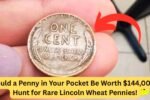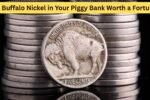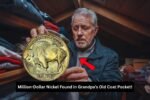A Special Piece of History
In 1976, the United States celebrated its 200th birthday, and the $2 bill got a big makeover to mark the occasion. Featuring Thomas Jefferson on the front and a cool engraving of the Declaration of Independence on the back, these bills were more than just money—they were a nod to America’s past. Most 1976 $2 bills are worth just a few dollars, but one recently sold at auction for an eye-popping $35,250. So, what made this particular bill so valuable? It’s all about rare features that turn an ordinary note into a collector’s treasure.
The Magic of Star Notes and Low Serial Numbers
The $2 bill that sold for $35,250 was no ordinary note. It was a rare “star note” from the San Francisco Federal Reserve with the serial number “00000001.” Star notes are special because they’re printed to replace damaged or misprinted bills, making them harder to find. Add to that a super-low serial number like “00000001” and perfect, uncirculated condition, and you’ve got a bill that collectors go wild for. This one was graded as Gem Uncirculated, meaning it was in pristine shape, like it just came off the press. These factors combined to make it a once-in-a-lifetime find.
Why Collectors Love $2 Bills
The $2 bill has always been a bit of an oddball in U.S. currency. It’s not used much in everyday life, which makes it feel special to collectors. The 1976 series was the first time $2 bills were printed as Federal Reserve Notes, and they were released in huge numbers to celebrate the bicentennial. Some even had first-day issue stamps from July 5, 1976, which can bump up their value. Other rare features, like “ladder” serial numbers (like 12345678) or printing errors, can also make these bills worth hundreds or even thousands of dollars.
How to Spot a Valuable $2 Bill
If you’ve got a 1976 $2 bill tucked away, it’s worth a closer look. Check the serial number on the right side of the bill. Low numbers, like “00000001” or “00000005,” are a big deal. Also, look for a star symbol in the serial number, which marks it as a star note. The condition matters too—bills that are crisp and uncirculated are worth more. If you think you’ve got a rare one, don’t fold or mark it. Put it in a protective sleeve and take it to a trusted currency dealer or grading service to check its value.
| Feature | Why It’s Valuable | Potential Value |
|---|---|---|
| Low Serial Number | Rare, like “00000001” or “00000005” | $20,000+ |
| Star Note | Replacement for defective bills | $100-$500+ |
| Uncirculated Condition | No wear, like brand new | Up to $35,250 |
| First-Day Issue Stamp | Stamped on July 5, 1976 | $20-$900 |
Tips for Selling Your $2 Bill
If you’re hoping to cash in on a rare 1976 $2 bill, handle it with care to keep its value high. Store it properly and get it authenticated by a professional. Auction houses like Heritage Auctions are great places to sell, as they attract serious collectors. For example, a 2003 $2 bill with a low serial number sold for $2,400 in 2022 and then $4,000 just two weeks later. Research recent sales on eBay or currency auction sites to get a sense of your bill’s worth. With the right features, your $2 bill could be a hidden gem waiting to shine.



